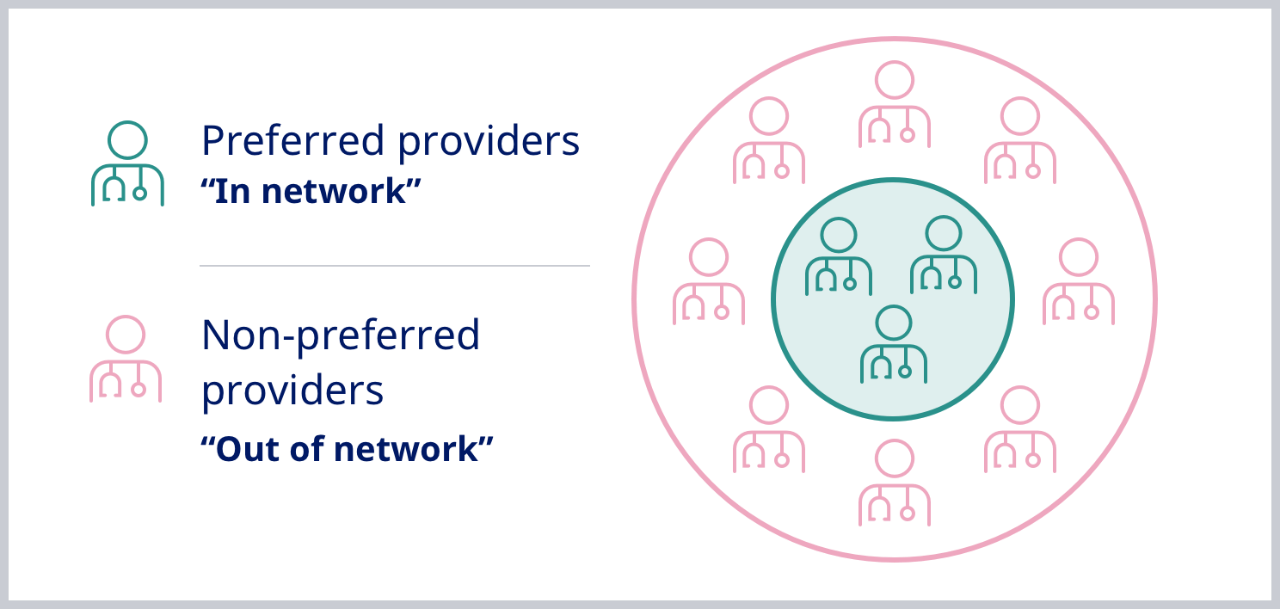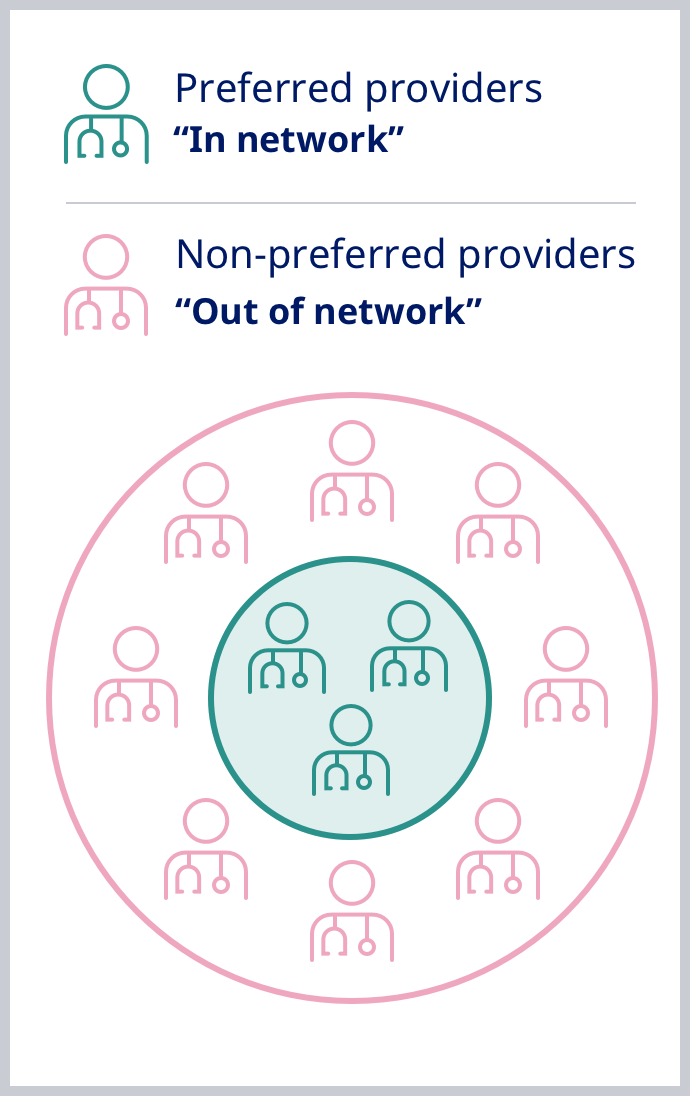
Exploring health insurance:
A deeper dive into some basic FAQs
Health insurance doesn’t have to be confusing.
Here are some health insurance questions and answers.
What is health insurance?
At its heart, health insurance is a contract between you and your health insurer to cover your medical expenses. Your health insurance company pays for some or all of your medical care, depending on your insurance plan.
What might my health insurance plan cover?
Plans can be very different. It’s important to check your {link-sbc} to see what your own plan covers.
An SBC is a short, easy-to-understand summary of what your plan covers and the associated costs. It can even help you compare the benefits and costs of different plans.
For example: If you have diabetes, and you’re shopping for health insurance, you may want to pick an insurance plan that provides strong coverage for the prescriptions and supplies you need, such as diabetic test strips.
Of course, everyone has different needs. That’s why SBCs can be so useful. If you have any questions about what’s covered in an SBC, it may help to contact your insurance provider or agent.
While benefits vary from plan to plan, here are examples of the services a health insurance plan
might cover:
While benefits vary from plan to plan, here are examples of the services a health insurance plan might cover:
Visits to a health care provider’s office or clinic
Hospital stays
Prescription medicines
Emergency and urgent care services
Laboratory tests
Preventive care, such as checkups and vaccines
What are the different ways to get health insurance?
There are many ways to get health insurance. Here are a few:
Commercial plans
A health insurance plan provided by and administered by a private insurance company rather than the government.
It can be:
- A group health plan offered by your or your spouse’s employer
- A plan you buy directly from a health insurance agent or company (you can find agents and companies in your area by searching the Internet, or by asking family, friends, or a doctor)
- A plan you buy on the Health Insurance Marketplace (this website was set up by the Affordable Care Act and offers commercial plans at a variety of rates).
Get more info with Max ![]()
A health insurance plan provided by and administered by a private insurance company rather than the government.
It can be:
- A group health plan offered by your or your spouse’s employer
- A plan you buy directly from a health insurance agent or company (you can find agents and companies in your area by searching the Internet, or by asking family, friends, or a doctor)
- A plan you buy on the Health Insurance Marketplace (this website was set up by the Affordable Care Act and offers commercial plans at a variety of rates).
A health insurance plan provided by and administered by a private insurance company rather than the government.
It can be:
A group health plan offered by your or your spouse’s employer
A plan you buy directly from a health insurance agent or company (you can find agents and companies in your area by searching the Internet, or by asking family, friends, or a doctor)
A plan you buy on the Health Insurance Marketplace (this website was set up by the Affordable Care Act and offers commercial plans at a variety of rates).
Get more info with Max ![]()
Government plans
If a commercial plan is too expensive or not available, you may be able to receive health insurance coverage from the government.
Two government plans that cover millions of people are:
Medicare
Go to the Medicare website to learn more about qualifying for and enrolling in this plan.
Get more info with Tom ![]()
Medicaid
Go to the Medicaid website to learn more about qualifying for and enrolling in this plan.
Get more info with Beth ![]()
If a commercial plan is too expensive or not available, you may be able to receive health insurance coverage from the government.
Two government plans that cover millions of people are:
Medicare
Go to the Medicare website to learn more about qualifying for and enrolling in this plan.
Get more info with Tom ![]()
Medicaid
Go to the Medicaid website to learn more about qualifying for and enrolling in this plan.
Get more info with Beth ![]()
How often should I review my coverage?
Be sure to review your plan at least once a year. Why so often? Because many health insurance plans will actually change what they cover and how much they charge every 12 months. You may also want to make sure your go-to health care providers are still preferred providers in your plan, because this can save you money.
Often, the easiest time to review your plan, and switch to a different one if needed, is during open enrollment.
What is open enrollment?
Each year there is an open enrollment period when people can enroll in a health insurance plan or change plans. For many, open enrollment happens during the fall, but the dates can vary. Be sure to verify your open enrollment dates with whoever is providing or administering your health care coverage–for example:
- Your employer
- Your health insurance company
- The Health Insurance Marketplace, (800)-318-2596
After open enrollment closes, there are also special enrollment periods that allow people with a life change—such as a job loss, marriage, or birth of a child—to enroll in a plan.
What is the difference between preferred and non-preferred providers?
A preferred or non-preferred provider is someone who provides your health care, such as a doctor, clinic, hospital, or laboratory. What’s the difference? Some health insurance plans pay for medical care only when you get it from a preferred provider–a provider who is part of a network (or “in-network”) plan.
If you visit a non-preferred (or “out-of-network”) provider, you may have to pay some or all of the costs yourself.


To learn more about a plan’s in-network and out-of-network coverage, be sure to review the {link-sbc} for each health insurance plan.
To find out whether a provider is in network or out of network for your plan, follow the instructions of your health insurance company. This may include:
- Calling the customer service number
- Visiting the company’s website (many insurers provide a Web page where you may review your plan’s benefits, coverage, and in-network and out-of-network providers)
What is the difference between medical coverage and prescription coverage?
Many people believe their employer offers prescription drug insurance directly through their health insurance plan. That’s true sometimes, but not always .
Many health plans separate health insurance into two parts:
Medical coverage
Medical health insurance generally covers expenses other than prescription drugs—for example:
- Office visits
- Hospital stays
- Trips to the emergency room
- Laboratory services
- Preventive care, such as checkups and vaccines
- Diabetes supplies, such as test strips, lancets, and blood sugar monitors
Office visits
Hospital stays
Trips to the emergency room
Laboratory services
Preventive care, such as checkups and vaccines
Diabetes supplies, such as test strips, lancets, and blood sugar monitors
Prescription coverage
Prescription drug insurance covers the costs of prescription drugs or medicines. Many health insurance plans outsource prescription drug benefits to a pharmacy benefits manager (PBM).
{link-pbm}
Call the customer service number on your health insurance card(s) to find out who provides your prescription drug insurance. (You may have separate cards for prescription and medical insurance.)
How do I know which prescriptions my insurance plan will cover?
Health insurance companies keep a list of prescription drugs they cover on their plans. That list is called a formulary. Formularies are usually divided into levels, or tiers.
Tiers show how much your copay or coinsurance will be, if anything, for a particular medicine.
PRO TIP #1: When it comes to prescriptions and medical care:
- A copay is a flat fee you pay—for example, $20 for a prescription.
- Coinsurance is a share of the cost—for example, 20% of a prescription’s price.
Copays and coinsurance for prescriptions will vary by plan and can change your out-of-pocket costs.

PRO TIP #1: When it comes to prescriptions and medical care:
A copay is a flat fee you pay—for example, $20 for a prescription.
Coinsurance is a share of the cost—for example, 20% of a prescription’s price.
Copays and coinsurance for prescriptions will vary by plan and can change your out-of-pocket costs.
TIER 1
$
TIER 1 $
Medicines in tier 1 are the least costly and have the lowest copay or coinsurance. These medicines are usually generic formulations of brand-name medicines.
TIER 2
$$
TIER 2 $$
Medicines in tier 2 are more costly and have a higher copay or coinsurance.
TIER 3+
$$$
TIER 3+ $$$
Medicines in tiers 3, 4, and above are the most costly and have the highest copay or coinsurance.

PRO TIP #2: Because formularies are always changing, check your plan’s formulary regularly to make sure that it is right for you.
It is also important to know that you may be able to get access to prescription medicines that aren’t listed on your health plan’s formulary at all.
Ask your doctor about beginning this process by submitting a prior authorization. This is a request submitted by your health care provider to your health insurance company to support your need for a specific prescription medicine.
PRO TIP #2: Because formularies are always changing, check your plan’s formulary regularly to make sure that it is right for you.
It is also important to know that you may be able to get access to prescription medicines that aren’t listed on your health plan’s formulary at all.
Ask your doctor about beginning this process by submitting a prior authorization. This is a request submitted by your health care provider to your health insurance company to support your need for a specific prescription medicine.
Need help with prescription costs?
You may be eligible for programs that can help you pay for your prescriptions.
